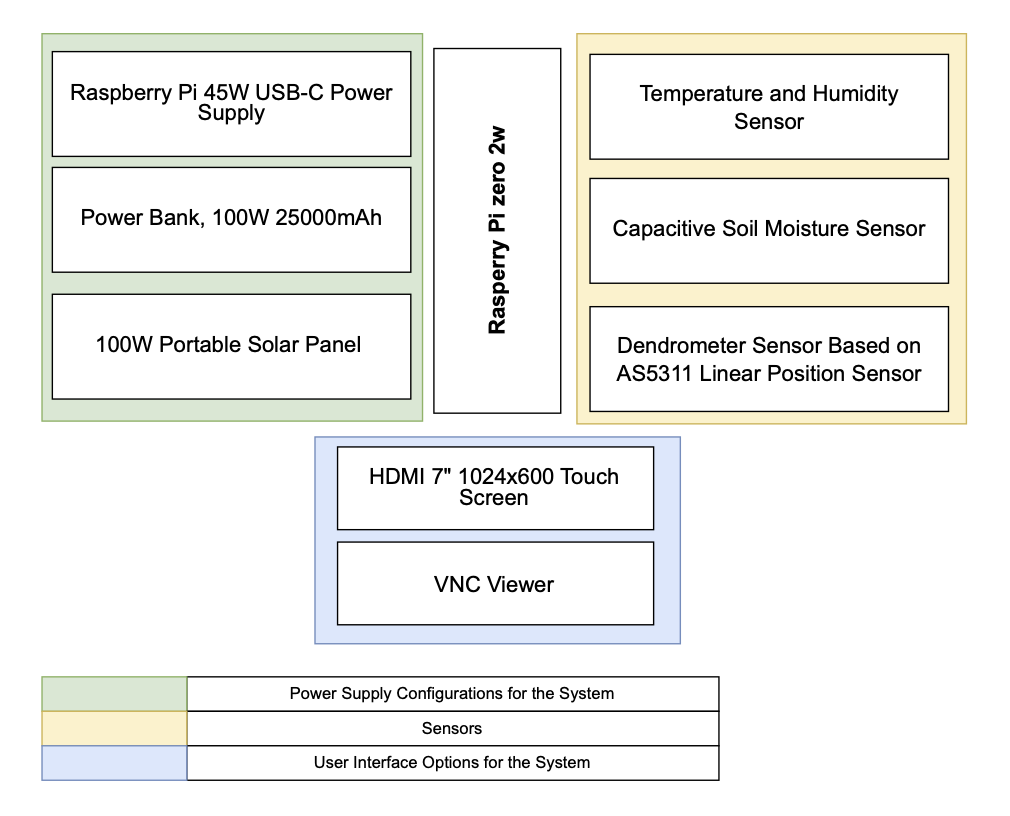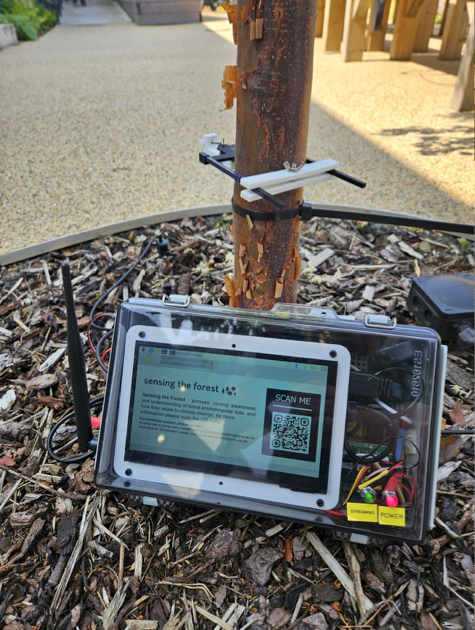DIY Tree Talker | Hardware
Authors: Mahmoud B. Elmokadem, Krishna Nama Manjunatha, Georgios Xenakis, Anna Xambó
A Real-World Deployment of the Streaming Unit.
📷 Photo by Mahmoud B. Elmokadem.
The system integrates a suite of sensors—including a capacitive soil moisture sensor, a combined temperature and humidity sensor, and a bespoke dendrometer, connected to a Raspberry Pi Zero 2W for data acquisition and processing.
A custom tree-talker prototype is being developed, using a participatory design approach. The device comprises a soil moisture sensor, a combined temperature and humidity sensor, and a bespoke dendrometer, connected to a Raspberry Pi Zero 2W single-board computer for data acquisition. You can read about our dendrometer in our tutorial Design of Cost Effective IOT Dendrometer Sensor for Environmental Monitoring.

Traditional dendrometer systems often come with high costs and complex installation requirements, limiting their accessibility for small-scale researchers; thus, a custom, cost-effective dendrometer was iteratively designed, based on Clonch and colleagues’ open-source magnetic carbon fibre dendrometer [1]. To further reduce costs, we replaced the carbon fibre frame with 3D-printed components made from high-density PLA, and captured data using the Raspberry Pi, reducing the overall cost by 50%, without compromising core functionality.
The main chassis of the dendrometer sensor is secured to the tree/plant using a strap, ensuring stable attachment without causing any damage to the bark or applying external stress. A movable component, referred to as the T-shaped magnet mount, is connected to the chassis via an extension spring and is positioned to slide forward and backwards in response to the tree/stem’s natural expansion or contraction. These micro-movements—often in the micrometer range—are detected by the AS5311 magnetic linear encoder, which precisely tracks the relative position of the magnet. The sensor transmits data to the Raspberry Pi Zero 2W via a PWM (Pulse Width Modulation) signal, which is then processed and converted into readable measurements that reflect changes in stem diameter over time. The sensor is integrated into a larger sensing unit that also includes additional climatic sensors to monitor environmental parameters such as temperature, humidity, and soil moisture, alongside the tree’s natural expansion or contraction. All collected data is streamed to a central server for real-time monitoring and analysis.

🔥 We are currently running a participatory design user study. We will share the hardware code soon on our GitHub project webpage.
List of References
[1] Clonch, C., Huynh, M., Goto, B., Levin, A., Selker, J. and Udell, C., 2021. High precision zero-friction magnetic dendrometer. HardwareX, 10, p.e00248.